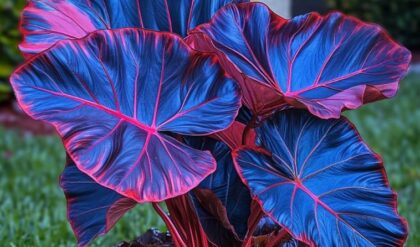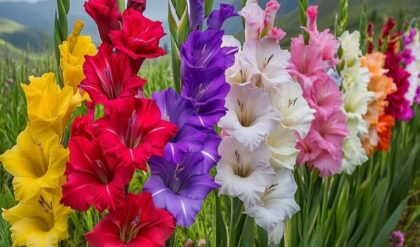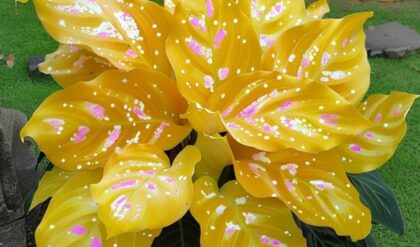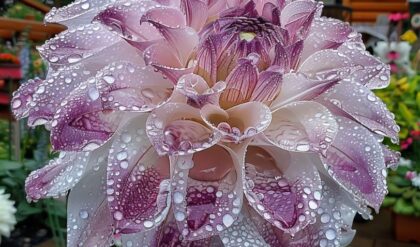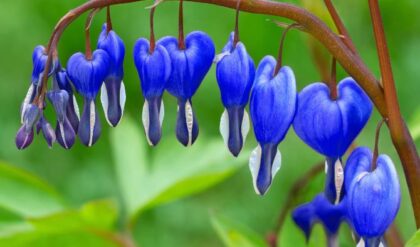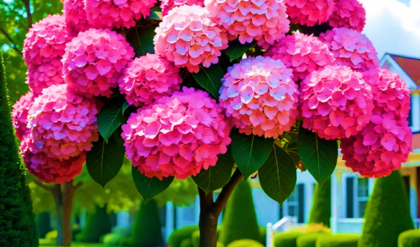The world of Caladiums is as captivating and vibrant as the plants themselves, often drawing the attention of both seasoned gardeners and curious novices alike. Emerging from tropical climates, these enchanting plants are celebrated not just for their stunning, heart-shaped leaves—drenched in a kaleidoscope of colors—but also for their adaptability and resilience. When delving into the comprehensive guide of Caladiums, one uncovers layers beyond mere aesthetics; it’s a journey through their origins, their unique lifecycle, and the specific care they require to flourish. With references underscoring various insightful guides, one can learn how these plants typically rest through the cold winter months only to awaken and provide splashes of summer color to shady areas come warm weather—a fascinating portrayal of nature’s rhythm. Moreover, understanding the distinct types of Caladium, from Miss Muffet to Heart of Jesus, opens up a conversation about the diversity that exists within this single genus, urging us to recognize the beauty of variety in both nature and life itself.
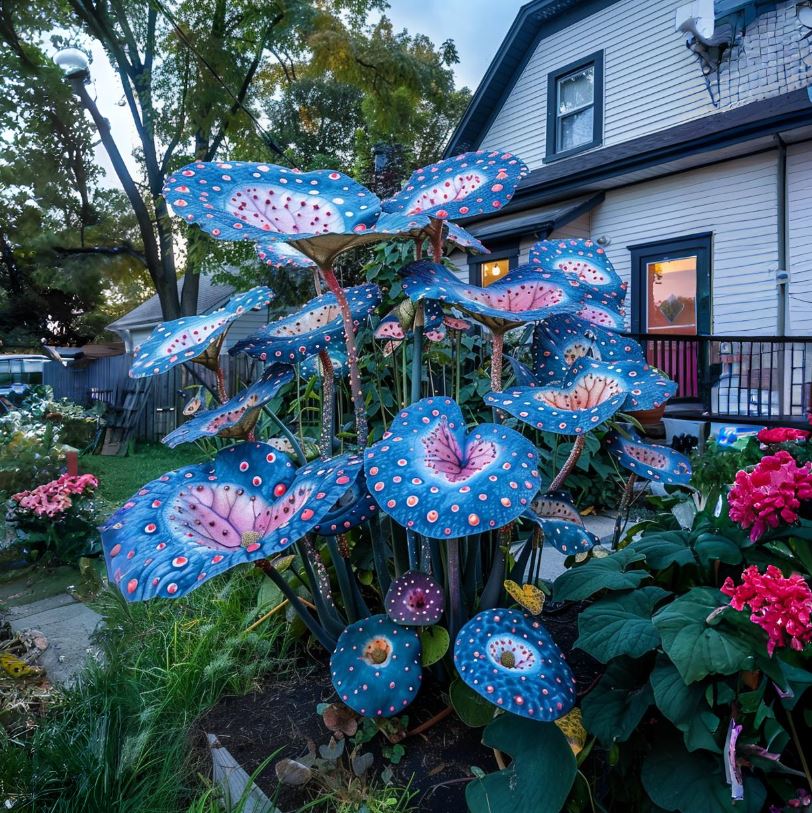
Understanding the Lifespan of Caladiums
Revealing their true essence, Caladiums possess a lifecycle that can often mirror our own experiences of growth and renewal. They undergo a seasonal transformation, lying dormant during colder months before bursting forth with exuberance as conditions become favorable. This cyclical pattern may prompt reflection on resilience and patience in our own lives, emphasizing that with appropriate care, something magical can emerge even after periods of dormancy or stasis. Engaging with a guide dedicated to their lifespan provides valuable insights into their behaviors and needs, painting a vivid picture of their dual existence between rest and activity.
The Dormancy Period
Caladiums, like many tropical plants, require a period of dormancy during the colder months of the year. During this time, the plants essentially go into a state of hibernation, with their leaves withering and the tubers (the underground storage organs) entering a resting phase. This dormancy is a crucial survival mechanism, allowing the plants to conserve energy and protect themselves from the harsh environmental conditions that would otherwise be detrimental to their growth.
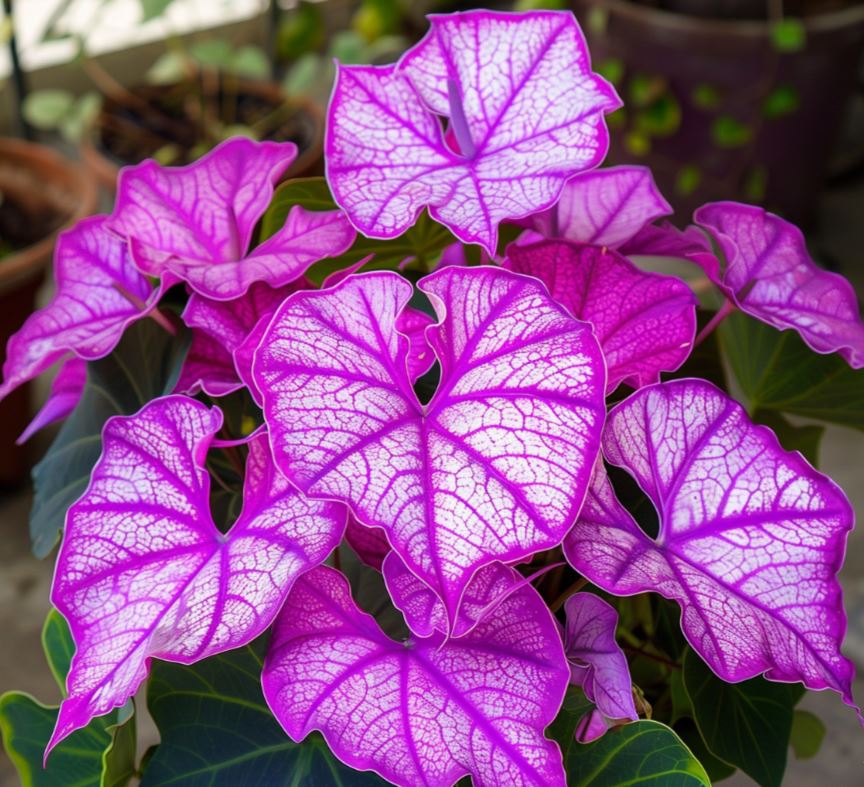
Understanding the importance of this dormancy period is essential for successful Caladium cultivation. Gardeners must be mindful of the optimal temperatures and soil conditions required to maintain the tubers’ health during this resting phase. Providing the right environment, such as cool, dry storage conditions, can ensure the tubers remain viable and ready to spring back to life when the warmer weather returns.
The Awakening and Growth
As the days grow longer and the temperatures rise, Caladiums begin to stir from their dormant state. The tubers sprout new growth, with vibrant leaves unfurling and reaching towards the sunlight. This awakening is a captivating process to observe, as the plants seemingly transform from dormant, lifeless structures into lush, colorful displays.
During the growth phase, Caladiums require attentive care to ensure they thrive. Providing the appropriate amount of moisture, fertilizer, and light exposure can optimize their development, allowing the leaves to reach their full potential in terms of size, color, and overall health. By understanding the specific needs of Caladiums during this active period, gardeners can create the ideal conditions for these plants to flourish and put on their annual show.
The Seasonal Cycle
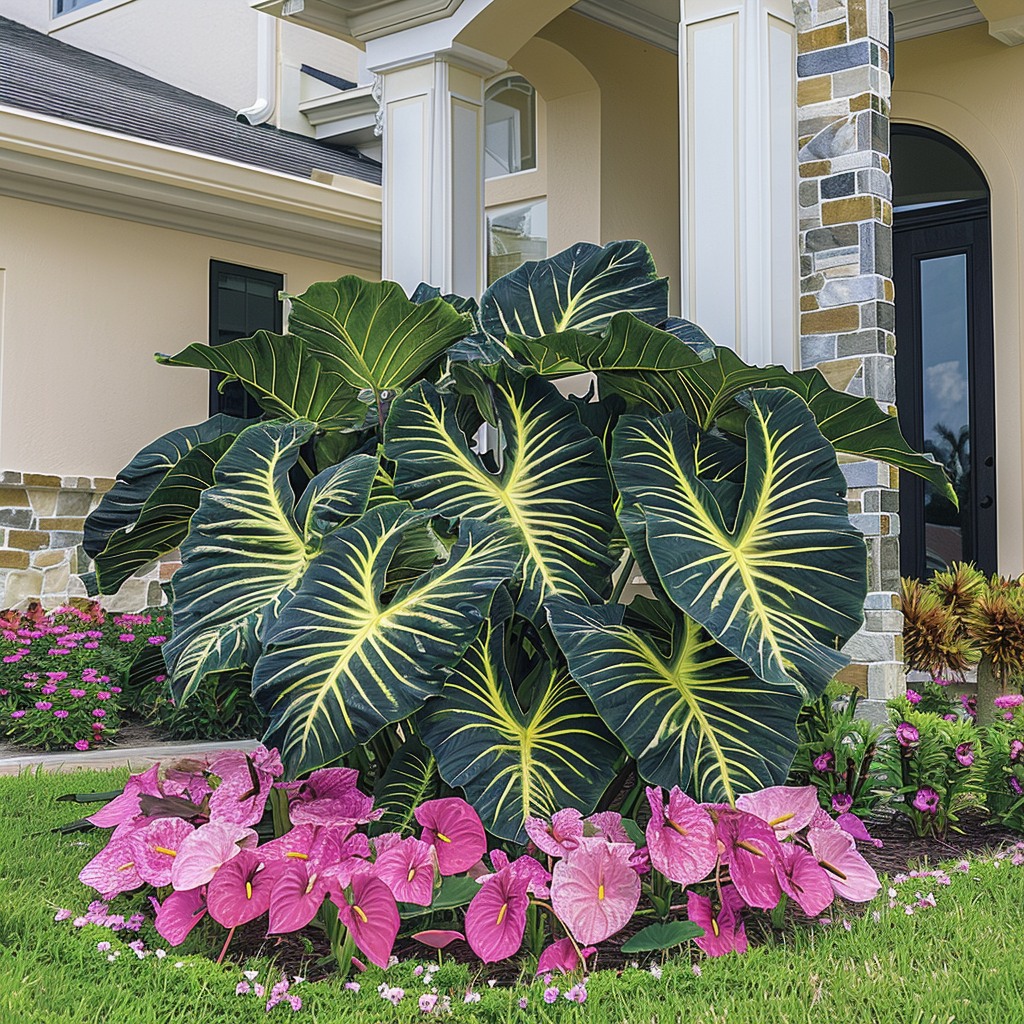
The seasonal cycle of Caladiums is a fascinating dance between dormancy and vitality, mirroring the rhythms of nature itself. As the temperatures drop and the days grow shorter, the plants begin to prepare for their winter rest, gradually shedding their leaves and retreating underground. This period of dormancy is a crucial phase, allowing the tubers to conserve energy and protect themselves from the harsh conditions.
When the warmer months return, the cycle begins anew, with the tubers awakening and sending forth their vibrant, heart-shaped leaves. This cyclical pattern not only showcases the resilience of Caladiums but also invites us to reflect on our own experiences of growth, renewal, and the importance of rest and rejuvenation in our lives. By understanding and appreciating the seasonal cycle of these enchanting plants, we can draw valuable lessons about the ebb and flow of life, and the beauty that can emerge from even the most dormant of states.
The Varied Types: A Spectrum of Beauty in One Family
When exploring the different types of Caladiums, one encounters an impressive range of patterns, colors, and sizes—all while noting how each type adapts to its environment. From the dramatic red and green veins of Miss Muffet to the subdued elegance of White Wonder, each variety offers a unique visual experience and may evoke different emotions. This realization draws parallels with personal identity and self-expression; just as Caladiums thrive in diverse forms, humans also exhibit a spectrum of characteristics shaped by individual experiences and environments. A thorough understanding of these variations encourages gardeners to select the perfect type for their specific gardens and aesthetic preferences while fostering a deeper appreciation for the complexities found in both flora and ourselves.
The Cultivar Connoisseur’s Delight
Within the captivating world of Caladiums, a true connoisseur’s delight lies in the vast array of cultivars, each with its own distinct personality and visual appeal. From the bold and dramatic to the subtly understated, the diversity of Caladium types is a testament to the remarkable adaptability and creativity found in nature.
One such enchanting cultivar is the “Miss Muffet,” with its striking combination of vibrant red veins and lush green foliage. The heart-shaped leaves of this variety seem to radiate an almost electric energy, commanding attention and evoking a sense of playful exuberance. In contrast, the “White Wonder” cultivar offers a more serene and elegant presence, with its delicate white leaves and soft green hues creating a calming, almost ethereal effect.
Exploring these varied types encourages gardeners to step outside their comfort zones and experiment with different color palettes and leaf shapes. By immersing themselves in the richness of Caladium diversity, they can discover new favorites and cultivate a deeper appreciation for the unique expression of each individual plant.
Adapting to the Environment
Caladiums, with their diverse range of cultivars, are remarkable in their ability to adapt to a variety of environmental conditions. While some types may thrive in full shade, others may prefer a bit more dappled light or even partial sun exposure. Understanding these nuanced preferences allows gardeners to make informed decisions about which Caladium varieties will best suit their specific growing environments.
For instance, the “Candidum” cultivar, with its striking white leaves and green veins, may perform exceptionally well in shady areas, where its luminous foliage can truly shine. Conversely, the “Gingerland” variety, with its bold red and green patterns, may find its optimal conditions in a setting that offers a balance of sun and shade, allowing the colors to develop to their full potential.
By exploring the adaptability of different Caladium types, gardeners can create harmonious and visually stunning compositions within their landscapes. This understanding encourages a deeper connection with the natural world, as they learn to work in tandem with the plants’ preferences and create environments where each cultivar can thrive.
The Emotional Connection
The diverse array of Caladium types not only delights the senses but also has the power to evoke profound emotional responses. Each cultivar, with its unique combination of colors, patterns, and leaf shapes, can trigger different feelings and associations within the observer.
The bold and dramatic “Hot Shot” variety, for instance, may inspire a sense of energy and vibrance, reminiscent of the warmth of a summer day. In contrast, the delicate and serene “Gingerland” cultivar can elicit a sense of tranquility and calm, inviting the viewer to slow down and appreciate the subtleties of its design.
Recognizing the emotional resonance of Caladium types can also lead to deeper personal insights. Just as these plants exhibit a spectrum of visual characteristics, so too do humans possess a diverse array of traits, experiences, and expressions. Embracing the emotional response evoked by different Caladium varieties can encourage a greater understanding and acceptance of the multifaceted nature of both the natural world and the human experience.
Insights into Care: Nurturing Their Enchantment
Caring for Caladiums extends beyond mere watering and sunlight provision. It involves a delicate approach similar to nurturing relationships or creative endeavors. Effective planting strategies, proper fertilization, and awareness of seasonal shifts maximize their potential, resembling the supportive environments we strive to create in our lives for continuous growth. For instance, knowing the best practices for watering choices can symbolize the importance of balance—overwatering may drown creativity, while lack of moisture might stunt it. Resources detailing these elements serve as encouragement, reiterating that care and attention can lead to extraordinary blooms, both in gardens and in our pursuits.
Planting Strategies
Successful Caladium cultivation begins with thoughtful planting strategies. Gardeners must consider factors such as soil composition, planting depth, and spacing to ensure the tubers thrive and produce the desired foliage display.
One key aspect of planting Caladiums is understanding the importance of well-draining soil. These tropical plants prefer a soil that is rich in organic matter and has the ability to retain moisture without becoming waterlogged. Amending the soil with compost or other nutrient-rich amendments can create the ideal growing medium for Caladiums to flourish.
Additionally, the depth at which the tubers are planted plays a crucial role in their development. Planting them too shallow can expose the tubers to temperature fluctuations and increase the risk of desiccation, while burying them too deeply can impede their ability to sprout and grow. Adhering to the recommended planting depth, typically 2-4 inches deep, can help ensure the Caladiums have the optimal conditions to establish a strong root system and produce lush, vibrant foliage.
Proper spacing between Caladium plants is also essential for their overall health and appearance. Allowing adequate space for the leaves to unfurl and the plants to spread out can prevent overcrowding, improve air circulation, and minimize the risk of disease. By carefully planning the layout and spacing of Caladium plantings, gardeners can create visually stunning displays that showcase the unique characteristics of each variety.
Fertilization Strategies
Nourishing Caladiums with the right fertilizer regimen is crucial for their ongoing growth and vitality. These plants are heavy feeders, requiring a balanced supply of essential nutrients to maintain their lush foliage and vibrant colors.
When it comes to fertilizing Caladiums, a slow-release or water-soluble formula high in phosphorus can be particularly beneficial. Phosphorus plays a vital role in root development, helping the tubers establish a strong foundation for the plant’s aboveground growth. Supplementing with a balanced fertilizer that also contains nitrogen and potassium can further support the overall health and vigor of the Caladiums.
Timing the application of fertilizers is equally important. Applying a dose of nutrients at the onset of the growing season can provide the necessary fuel for the plants to burst forth with new growth. Subsequent applications throughout the summer months can help sustain the Caladiums’ energy levels and ensure they maintain their vibrant hues.
Ultimately, a well-thought-out fertilization strategy, tailored to the specific needs of Caladiums, can be the difference between a mediocre display and a truly enchanting garden showpiece. By nourishing these plants with the right balance of nutrients, gardeners can unlock their full potential and witness the magic of their captivating foliage.
Seasonal Awareness
Caladiums are inherently tied to the rhythms of the seasons, and understanding their seasonal needs is crucial for their successful cultivation. These tropical plants have a distinct cycle of dormancy and growth that must be respected and accommodated to ensure their long-term health and vitality.
During the colder months, Caladiums enter a state of dormancy, with their leaves withering and the tubers retreating underground. This period of rest is essential for the plants to conserve energy and prepare for the next growing season. Gardeners must be mindful of not disturbing the dormant tubers and providing them with the appropriate storage conditions, such as cool, dry environments, to maintain their viability.
As the days grow longer and the temperatures rise, Caladiums begin to stir from their slumber, signaling the start of the active growing season. This is the time when gardeners must be attentive to the plants’ water and nutrient needs, ensuring they receive the optimal conditions to unfurl their stunning foliage. Monitoring for signs of new growth and adjusting watering and fertilization accordingly can help the Caladiums reach their full potential.
Understanding the seasonal rhythms of Caladiums is not just about maintaining their physical health; it also encompasses a deeper appreciation for the natural cycles that govern these enchanting plants. By aligning our care and attention with the ebb and flow of the seasons, we can foster a more harmonious and rewarding relationship with the Caladiums in our gardens.
Creating a Magical Experience in Your Garden
Incorporating Caladiums into your garden transforms spaces into enchanting havens filled with color and texture. As seasonal beds awaken, consider strategically placing them where shadows dance playfully across their beacons of brilliance. Picture wandering through a lush setting dotted with varying shades of greens, pinks, and whites—each leaf rustling in the gentle breeze. As you immerse yourself in the artistry of nature’s palette, it becomes clear that Caladiums are not merely ornamental; they invite contemplation of how environments shape our moods and connections. This interplay encourages engagement with our surroundings, prompting a curiosity about how natural beauty intertwines with other experiences in life—an artistic reminder of our connection to nature.
Captivating Compositions
Creating captivating compositions with Caladiums in the garden can be a true art form, as these enchanting plants offer a diverse array of colors, shapes, and textures to work with. By strategically placing different cultivars and varieties, gardeners can craft visually stunning displays that capture the imagination and delight the senses.
One compelling approach is to use Caladiums as focal points, allowing their vibrant foliage to command attention and draw the eye inward. Positioning a cluster of “Postman Joyner” Caladiums, with their bold red centers and green borders, can create a striking centerpiece that sets the tone for the entire garden.
Alternatively, gardeners can embrace the idea of using Caladiums as accents, weaving their captivating leaves throughout the landscape to add pops of color and texture. The delicate, lace-like leaves of the “Gingerland” cultivar, for instance, can be strategically placed to complement the broader foliage of surrounding plants, creating a harmonious and visually dynamic composition.
By thoughtfully considering the placement, contrasting colors, and varying leaf shapes of Caladiums, gardeners can craft enchanting vignettes that invite exploration and inspire a deeper appreciation for the natural world.
Embracing the Rhythm of the Seasons
Incorporating Caladiums into a garden becomes an immersive experience that invites visitors to engage with the rhythm of the seasons. As these tropical plants emerge from their dormant state and unfurl their vibrant leaves, they mark the transition from the cooler months to the warmth of summer.
Imagine a shaded garden path adorned with a cascade of Caladiums, their leaves glistening in the dappled sunlight. As the seasons progress, this living canvas transforms, with the lush foliage gradually fading and the plants retreating underground to rest. The very act of witnessing this cyclical pattern can evoke a sense of wonder and connection to the natural world, reminding us of the constant ebb and flow that governs all living things.
By embracing the seasonal changes that Caladiums bring to a garden, visitors are encouraged to slow down, observe, and engage with the environment on a deeper level. The dance between dormancy and growth, between rest and renewal, can serve as a powerful metaphor for the cycles and rhythms that shape our own lives, prompting reflection and a greater appreciation for the natural world around us.
Cultivating a Sense of Enchantment
Caladiums have the remarkable ability to transform a garden into a realm of enchantment, where the boundaries between the natural and the fantastical seem to blur. Their captivating foliage, with its vibrant colors and intricate patterns, has the power to captivate the senses and ignite the imagination.
Imagine a secluded corner of the garden, where clusters of Caladiums seemingly glow in the soft light, their leaves casting delicate shadows on the ground below. As a gentle breeze rustles the foliage, the scene takes on a dreamlike quality, evoking a sense of magic and wonder. This experience can transport visitors to a realm where the ordinary becomes extraordinary, where the beauty of nature transcends the mundane and invites us to embrace the enchantment that surrounds us.
By cultivating an environment rich with Caladiums, gardeners have the opportunity to create spaces that inspire awe, delight, and a deeper connection to the natural world. These enchanting plants have the power to spark creativity, ignite the imagination, and foster a sense of reverence for the incredible diversity and beauty found in the living world.
Conclusion
By embracing the teachings and allure offered by Caladiums, we are reminded that, much like our ownlives, there exists an intricate dance between rest and growth. Caladiums stand as testaments to resilience and beauty in the cycles of nature we often forget to notice amid our busy lives. Each season offers us a new lesson, each vibrant leaf a whisper urging us to pause, breathe, and appreciate the moment.
As gardeners and observers of life, nurturing groups of these stunning plants becomes more than just a task; it invites a deeper engagement with our environment—a commitment to understanding the poetry of seasons transforming our habitats into epic tales of color and emotion. This journey not only enriches our gardens but encourages us to connect to larger narratives—of sustainability, intentionality, and nurturing the world around us. By incorporating Caladiums, we cultivate a magical experience that harmonizes our own rhythms with those of nature, weaving a tapestry of enchantment and wonder throughout our lives and gardens alike.
The Power of Color in Your Garden
Color plays a vital role in the aesthetics and emotions conveyed through gardening, transforming simple outdoor spaces into vibrant canvases bursting with life. Caladiums are exceptional in this regard, offering a palette of vivid hues ranging from deep greens to striking reds and whites. Understanding the psychology of color and its effects on mood can help gardeners make purposeful choices about where to place their blooms, resulting in enchanting spaces that resonate deeply with both those who tend them and those who visit.
The Psychology of Color
Colors can evoke feelings and provoke reactions; they have a profound impact on how we experience our environments. In the world of landscaping, leveraging color strategically can yield remarkable transformations in atmosphere and mood.
Warm colors like yellows, reds, and oranges typically evoke energy, warmth, and passion. For instance, placing “Frieda Hemle” or “Marguerite” Caladiums – known for their brilliant red and yellow tones – in key areas of your garden will create focal points that catch attention and inspire enthusiasm among visitors. These colors can energetically draw you towards different spots in the garden, making unexpected and joyful discoveries feel inevitable.
In stark contrast, cool colors such as blue and green tend to promote calmness, relaxation, and serenity. Imagine complementing a tranquil water feature in your garden with soothing green “White Queen” Caladiums. The interplay between cool foliage and reflective surfaces will invite contemplation and provide restful respites amidst your horticultural exploration.
By blending warm and cool shades, gardeners can influence the overall dynamic of their space, eliciting myriad emotions and experiences.
Creating Contrasts with Caladiums
Caladiums possess the ability to create visual drama and excitement in any setting. Their large leaves, adorned with bold patterns and colors, demand attention and spark curiosity in the onlooker.
For example, consider creating thrilling contrasts by juxtaposing darker-hued varieties like “Black Magic,” recognized for its stunning dark foliage, against lighter companions like “Candyland,” which showcases delightful pink speckles on bright white leaves. This high-contrast arrangement becomes an artistic expression, evoking an almost three-dimensional effect and inviting contemplation of form and texture.
Similarly, planting blends of various shapes—like the dagger-like edges of one variety alongside serrated edges in another—adds not only contrast in coloration but also shape. The result is an immersive work of art that engages one’s senses fully, stimulating both visual and tactile investigations.
Utilizing Color Themes
When utilizing Caladiums in your garden, one innovative approach consists of developing distinct color themes or schemes. This consistent yet varied application of color can guide layout decisions and enhance the overall cohesion of your garden narrative.
A monochromatic theme—with all-white or varying shades of green Caladiums—can create periods of elegance and sophistication. Picture a secluded shade garden echoing tranquility when exposed to sunlight filtering through the leaves. Alternatively, employing a complementary color scheme—where types are arranged in a harmonious relationship with other plants—establishes a canvas rich with warmth and subtle coordination.
This intentional use of color draws attention to Black-eyed Susans or hostas while simultaneously paying homage to the stellar contributions made by the radiant Caladiums. Each color choice turns into a brushstroke within the ever-evolving artwork that reflects the gardener’s taste and environmental conditions, enhancing interactions with nature and inviting stillness and appreciation.
Designing a Kids-Friendly Garden Using Caladiums
Creating an engaging, safe, and educational garden for children can be a fulfilling endeavor. Caladiums play a wonderful role in this context, providing a kaleidoscope of colors that capture children’s imaginations while encouraging their interaction with the natural world.
Outdoor Learning Spaces
Gardens serve as powerful tools for experiential learning, exposing children to concepts such as biology, ecology, and environmental stewardship. Caladiums, with their vivid foliage and unique textures, offer opportunities for kids to explore plant biology firsthand.
Encouraging children to observe and engage with the growing process allows them to grasp concepts such as photosynthesis, growth cycles, and seasonal changes. Planting bulbous Caladiums together can accelerate excitement for children—watching as bulbs emerge from beneath the soil represents an exciting adventure into transformation and rebirth.
In integrating lessons with activities—such as measuring leaf growth or counting the number of diverse Caladiums planted—gardeners can foster practical knowledge and incorporate creativity into learning frameworks.
Hands-On Exploration
Kids are naturally curious, and gardens provide ample opportunities for hands-on exploration. Incorporating elements that stimulate their senses becomes crucial while designing with Caladiums.
Textured leaves invite young hands to crinkle and caress, allowing children to investigate diversity not merely through sight but through touch. Additionally, discussing descriptive words—such as “veiny,” “smooth,” or “crinkly”—further enhances vocabulary-building while igniting inspiration and creativity.
Setting up scavenger hunts to find specific Caladium varieties or arranging games to identify colors and shapes can morph an afternoon spent in nature into an invaluable learning experience merged with playfulness. Engaging a child’s imagination adds to their love for nature and may open their minds to future explorations in gardening.
Safe Spaces to Grow
Prioritizing safety while engaging children lies at the heart of designing kid-friendly gardens. Given that some plants can pose risks, it’s essential to choose non-toxic species like Caladiums and arrange them creatively to protect delicate blooms from accidental trampling or harm.
Using Caladiums along pathways or borders—far from primary play zones—encourages the understanding of boundaries while maintaining the allure of vibrancy. Gardens become inviting sanctuaries where children learn the importance of stewardship and respect for living entities, nurturing a sense of belonging and responsibility.
Beyond aesthetics, these strategies cultivate mindfulness—embedded values that instill true appreciation for environmental beauty.
Conclusion
By considering the enchanting properties of Caladiums within gardens designed to nurture young minds, the crafting of educational experiences intertwined with natural beauty unfolds. Such thoughtful arrangements foster love, curiosity, and sustained connections with nature as children grow, equipping them with essential values for their lives and nurturing the guardians of tomorrow. Embracing the visions offered by these beautiful plants enables gardens to play transformative roles in individual development as well as communal harmony.
Through cultivating the vibrancy and incredible spirit of Caladiums, gardeners can weave together every nuance of seasonal rhythms and connectivity with nature, nurtured in a tapestry of enrichment and engagement. By embracing the inspiring perspectives offered by these plants, we reaffirm our purpose as caregivers not solely of our gardens but also of our communities and the earth itself. Let this symphony of nature inspire us all to unearth deeper connections, to dance with the seasons, and to revel in the breathtaking manifestations of life unfolding all around us. Back Viết tiếpNext
